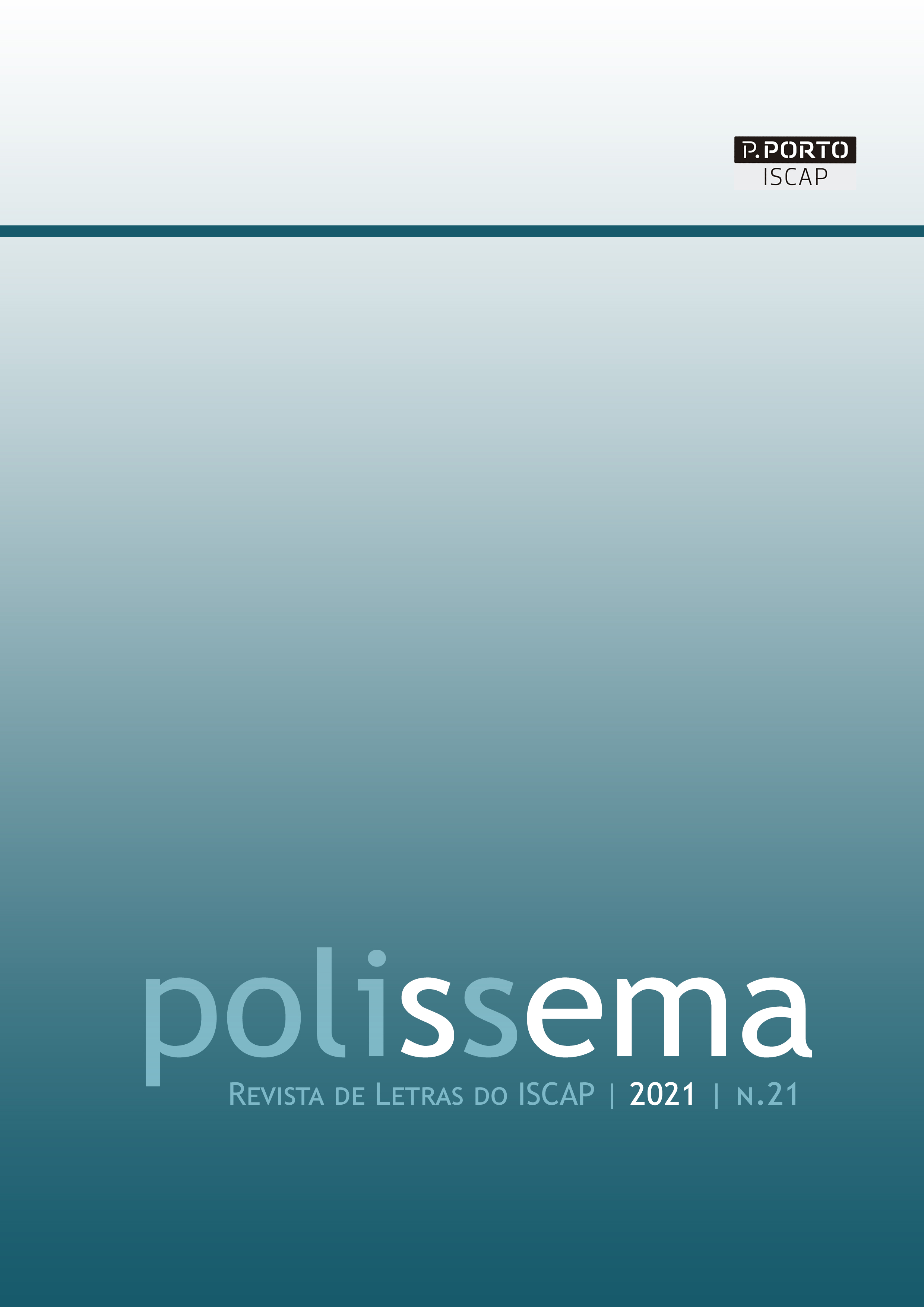A TRADUÇAO DE GUIAS VISUAIS DESTINADOS A TURISTAS: TRANSMISSÃO DO TEXTO VISUAL
DOI:
https://doi.org/10.34630/polissema.vi21.3845Palavras-chave:
touristic texts, maps, translation, localisation, institutional touristic sponsoringResumo
Esta investigação visa apresentar uma análise da tradução do género 'site turístico' e, em particular, da localização de websites. Abordará também o uso de mapas multilingues em Internet como guia e ferramenta para a atração de turistas. O trabalho analisa seis websites que descrevem seis das cidades mais importantes da Galiza e mostra os esforços linguísticos e visuais para criar uma serie de sites coloridos, inspiradores e relaxantes com textos concisos e mapas que se distribuem ao longo de algumas das ligações temáticas. Finalmente, destaca o papel das instituições públicas enquanto entidades que distribuem os recursos disponíveis para criar estes guias e promover os diferentes destinos turísticos.
Referências
Adab, B. (2000). “Towards a More Systematic Approach to the Translation of Advertising Texts”. In A. Beeby, D. Ensinger & M. Presas (eds.), Investigating Translation (pp. 223-234). John Benjamins Publishing Company.
Agorni, M. (2012a). “Questions of Mediation in the Translation of Touristic Texts”. Altre Modernità, n. p. Retrieved from: https://riviste.unimi.it/index.php/AMonline/article/view/1963.
Agorni, M. (2012b). “Tourism communication: the translator’s responsibility in the translation of cultural difference”. PASOS Revista de Turismo y Patrimonio Cultural. 10, 4, 5-11. http://doi.org/10.25145/j.pasos.2012.10.048.
Cappelli, G. (2007). “The translation of tourism-related websites and localization: problems and perspectives”. In A. Baicchi (ed.), Voices on Translation. RILA Rassegna Italiana di Linguistica Applicata (pp. 97-116). Bulzoni.
Dann, G. (1996). The Language of Tourism. Cab International.
Durán, I. (2012). “Analysing Common Mistakes in Translations of Tourist Texts (Spanish, English and German”. Onomázein, 26, 335-349. Retrieved from https://dialnet.unirioja.es/descarga/articulo/4419765.pdf.
Fuentes, A. (2016). “Branding and Selling a country through translated tourism advertising: Spain’s image”. Revista de Lenguas para Fines Específicos 22.2, 84-103. http://dx.doi.org/10.20420/rlfe.2016.113.
Fuentes, A. & Kelly, D. (2000). “The Translator as Mediator in Advertising Spanish Products in English-Speaking Markets”. In A. Beeby, D. Ensinger & M. Presas (eds.), Investigating Translation (pp. 235-242). John Benjamins Publishing Company.
Grabler, F. et al. (2008). “Automatic Generation of Tourist Maps”. SIGGRAPH 100, 1-11. Retrieved from: vis.berkeley.edu/papers/tmaps.
House, J. (1997). Translation Quality Assessment: A Model Revisited. Günter Narr.
López-González, R. C. (2015). “Post-Tourism Online: Bridging the Cultural Gap between Describing a Galician City and Attracting Foreign Visitors”. In D. Gallego-Hernández (ed.), Current Approaches to Business and Institutional Translation. Proceedings of the International Conference on Economic, Business, Financial and Institutional Translation (pp. 41-51). Peter Lang.
López-González, R. C. & García, E. (2015). “To Eat or not to Eat…In Vigo. The Translator Solves the Dilemma”. Belas Infiéis, 4(1), 71-84. Retrieved from: http://periodicos.unb.br/index.php/belasinfieis/article/view/11313.
Nichols, B. (2015). The difference between Translation and Localization for Multilingual Website Projects (Definitions). Retrieved from: https://content.lionbridge.com/the-difference-between-translation-and-localization-for-multilingual-website-projects-definitions/.
Poncini, G. (2006). “The Challenge of Communicating in a Changing Tourism Market”. In O. Palusci & S. Francesconi (eds.) Translating Tourism: Linguistic/Cultural Representations, (pp. 15-34). Università degli Studi di Trento Editrice.
Pym, A. (2004). The Moving Text: Localization, translation, and distribution. Amsterdam: John Benjamins.
Pym, A. (2011). “Website Localization”. In K. Malmkjær & K. Windle (eds.) The Oxford Handbook of Translation Studies, (n. p.). Oxford University Press. DOI: 10.1093/oxfordhb/9780199239306.013.0028.
Sandrini, P. (2008). “Localization and Translation”. MuTra Journal, Vol 2, 167-191. LSP Translation Scenarios. Selected Contributions to the EU Marie Curie Conference Vienna 2007. H. Gerzymisch-Arbogast, G. Budin, G. Hofer (eds.). ATRC.
Santini, M. (2006). “Web pages, text types, and linguistic features: Some issues”. ICAME Journal, Vol. 30, 67-86.
Singh, N. & Pereira, A. (2005). The Culturally Customized Web Site. Customizing Web Sites for the Global Marketplace. Elsevier.
Suau, F. (2012). “El turista 2.0 como receptor de la promoción turística: estrategias lingüísticas e importancia de su estudio”. PASOS Revista de Turismo y Patrimonio Cultural Vol. 10, 4, 143-153. Retrieved from: http://doi.org/10.25145/j.pasos.2012.10.060.
Watkins, J. (ed.) (2002). The Guide to Translation and Localization. Preparing Products for the Global Marketplace. Lingo Systems and American Translators Association.
Wilkinson, M. (2005). “Discovering Translation Equivalents in a Tourism Corpus by Means of Fuzzy Searching”. Translation Journal 9, 4, n. p. Retrieved from: https://www.translationdirectory.com/article745.htm
Downloads
Publicado
Como Citar
Edição
Secção
Licença
Direitos de Autor (c) 2021 POLISSEMA – Revista de Letras do ISCAP

Este trabalho encontra-se publicado com a Licença Internacional Creative Commons Atribuição-NãoComercial-SemDerivações 4.0.


